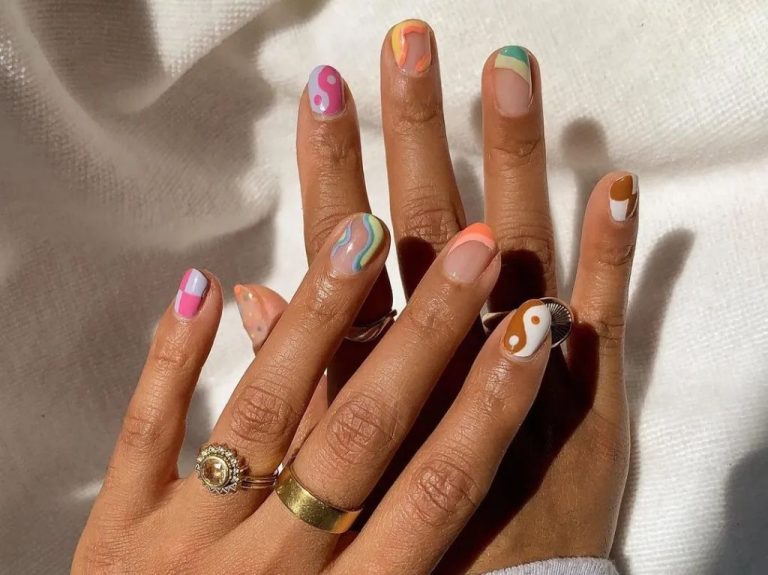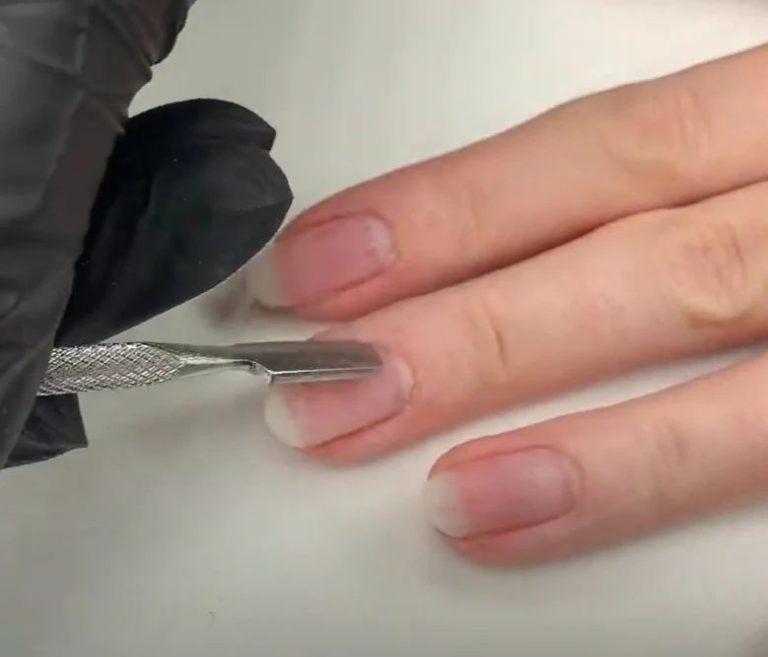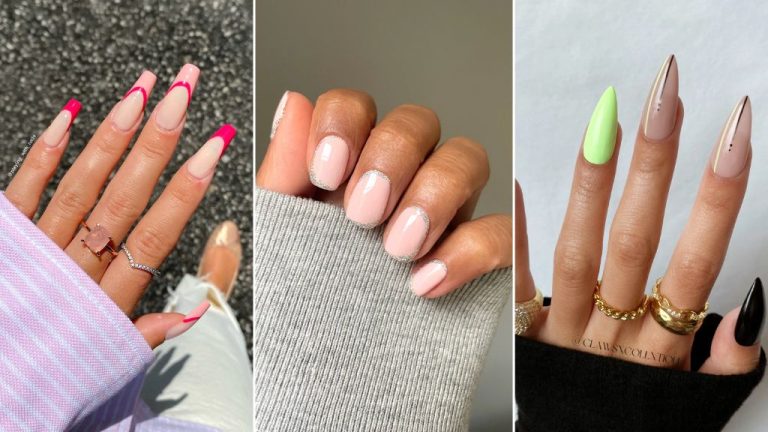Nail Shape Guide For Beginners: Where To Start
This guide provides detailed information for nail shape beginners to help determine the best nail shape based on nail bed anatomy, hand size and shape, lifestyle factors, and personal style preferences. Having the right nail shape can make hands look neat, well-groomed and elegant. An understanding of nail shapes will empower beginners to choose the most flattering nail shape for their hands.
The most common nail shape categories are square, round, oval, almond, and stiletto. Each has its own aesthetic properties and considerations regarding application and maintenance. The goal of this guide is to provide the key factors to evaluate when selecting the ideal nail shape as a beginner.
Anatomy of the Nail
The nail is composed of the nail plate, nail bed, nail folds, nail grooves, cuticle, lunula, and the surrounding skin.[1] Here is an overview of the parts:
Nail plate: The visible, hard part of the nail.
Nail bed: The skin beneath the nail plate that contains nerves, lymph and blood vessels.
Nail folds: The skin folds that frame and support the nail on three sides.
Cuticle: The skin that overlaps the nail plate and rims the base of the nail.
Lunula: The whitish, crescent-shaped base of the visible nail.
Hyponychium: The thickened layer of skin beneath the free edge of the nail plate.
Eponychium: The small band of epithelium that extends over the proximal nail fold onto the base of the nail.
The nail root, where new nail cells are formed, is tucked under the skin behind the lunula. The nail grows forward from the root while adhering to the nail bed below it.
[1] https://bio.libretexts.org/Courses/West_Hills_College_-_Lemoore/Human_Anatomy_Laboratory_Manual_(Hartline)/06%3A_Integumentary_System/6.04%3A_Anatomy_of_the_Nails
Nail Shape Categories
There are several main nail shape categories to choose from when getting a manicure or applying acrylic/gel extensions. The most common nail shape categories include:
- Square – Squared off nail edge that meets the finger at a 90 degree angle.
- Round – Rounded nail edge with a curved-under shape.
- Oval – Oval or egg-shaped nail, longer than wide.
- Almond – Slightly pointed oval nail shape.
- Coffin – Also called ballerina, an elongated almond shape with a straight edge.
- Stiletto – Very pointed, dagger-like shape.
- Squoval – Hybrid between square and oval.
These nail shape categories provide a starting point to help determine your ideal nail shape. The most popular nail shapes tend to be round, oval, square and almond shapes. More dramatic elongated shapes like coffin and stiletto have also become trendy nail shape options. Choosing a shape is largely based on personal preference, nail bed length/shape and lifestyle factors.
Determine Your Nail Shape
Determining your natural nail shape is essential before deciding what nail shape you want to get. Here’s how to figure out your natural nail shape:
- Look at your nails when they are short and unpolished. The shape they grow into naturally is your natural nail shape.
- Identify whether your nail plate is wider at the top and comes to a point at the tip (almond), is widest in the middle and tapers at the tip (oval), has straight sides and squarish tips (square), or is evenly rounded from cuticle to tip (round).
- Look at the appearance of your nail beds – are they flat and straight or naturally curved?
- Observe the way your nails grow out – does the free edge grow out straight or with a curve?
- Consider the length – long nails will appear more pointed or squared off than shorter nails.
- Look at the appearance of white spots or ridges on the nails for clues about your nail bed shape.
- Examine your nail shape over time as nails grow out to identify their natural shape.
Once you determine your natural nail shape, you can decide if you want to enhance it or try something new. But knowing your starting point is key!
Choosing a Nail Shape
When choosing a nail shape for your hands, there are a few key factors to consider:
Hand and nail size – Smaller, delicate hands tend to look best with shorter nail beds like oval or squoval shapes. Larger hands can handle longer, dramatic shapes like almonds or stilettos (source).
Nail thickness – If you have thin nails, avoid very sharp, angular shapes that put stress on the nail edge. Rounded shapes like oval are gentler for thin nails.
Lifestyle – Active lifestyles may fare better with short, rounded edges that are less prone to breakage. More dramatic shapes can suit less active lifestyles.
Personal style – Your own sense of style should guide what shape you feel most confident with. Trendy almond or ballerina shapes express a bold, modern aesthetic.
Experiment and see what nail shape makes your hands look their most elegant. The right shape should complement your hands while matching your personal taste.
Square Nails
Square nails are exactly what they sound like – nails with straight, 90-degree edges that create a square or rectangular shape. This nail shape has its pros and cons:
Pros:
- Square nails make fingers look longer and hands appear more slender.
- The straight edges give a clean, defined look.
- Square shape works well for nail art with straight lines and geometric patterns.
Cons:
- The sharp corners can be prone to breaking, cracking, or peeling.
- May not suit those with smaller nail beds as it can make nails look smaller.
When getting square nails, experts recommend:[1]
- Asking the nail tech to slightly round the sharp corners to help prevent cracking.
- Keeping nails filed straight across to maintain the square edges.
- Using a strengthening base coat and top coat to add durability.
For style ideas, square nails look great with:[1]
- Single color polish or French manicure.
- Nude and neutral tones.
- White tips.
- Clean stripes and geometric patterns.
- Negative space nail art.
Round Nails
Round nail shape is one of the most common and versatile options. This classic look complements all nail lengths and widths. Some key things to know about round nails:
Pros:
- Universally flattering on all nail beds.
- Allows you to have shorter nails without exposing the sides of the nail bed.
- Gives off a natural, subtle look.
- Low maintenance and easy to shape at home.
Cons:
- Can sometimes look plain compared to more stylized shapes.
- Less surface area for nail art.
- May not suit those wanting an edgy or glamorous look.
Best practices for round nails include filing the tips straight across and lightly rounding the corners. This will help prevent snagging and breakage. Go for a classic French manicure or simple nude polish to complement the shape.
Round nails pair well with sparkles, jewel tones, or soft pastel shades. You can give basic round tips more flair by adding a contrasting color, negative space accents, or two-toned ombre.
Citation: https://www.lemon8-app.com/discover/round%20nail%20shape%20guide?region=us
Oval Nails
Oval nails are a classic, versatile shape that has been popular for decades. The rounded edges and symmetrical oval look is flattering on most nail beds (Glamour). Some key things to know about oval nails:
Pros:
- Universally flattering and elegant look
- Balanced shape complements most nail beds
- Works well with nail art since it provides a “canvas”
- Easier to maintain than more dramatic shapes like stilettos
Cons:
- Not as edgy or bold as square or pointed shapes
- Requires more maintenance than short, square shapes
When getting oval nails, experts recommend asking for an oval that is wider at the base and rounds out at the tip. An oval that is too skinny or pointy starts to look like an almond (MindBodyGreen).
Oval nails look great with any style nail art from minimalist French tips to colorful designs. They provide the perfect canvas for patterns, glitter, gems, and more. Keep oval nails looking chic by opting for neutral, pink, or red hues.
Almond Nails
Almond nails are a popular nail shape choice for their sleek and elegant look. This shape features a slender point that extends just past the fingertip with slightly rounded edges (Almond Nail Shape Guide).
Some pros of almond nails include:
- The elongated point slims and elongates the fingers
- The rounded edges are less sharp than a stiletto shape
- Works well for most nail lengths and hand shapes
Some cons to consider are:
- The point can be prone to breaking
- May not work as well for very short nails
- Requires more maintenance than shorter shapes
To get the most wear out of almond nails:
- Ask your nail tech to reinforce the tip
- Use a strengthening base coat
- Avoid using your nails as tools
Almond nails look great with a variety of nail art styles like ombre, chrome, or floral designs. This versatile shape pairs well with sparkles, jewels, and nail art (Milky Almond Nails). An almond manicure with neutral tones or sheer pinks and nudes creates a polished, elegant look.
Conclusion
In summary, nail shape is an important consideration when getting your nails done or doing them yourself. The shape you choose should complement your nail beds, fingers, and hand shape. For beginners, oval and squoval shapes are classic choices that tend to be universally flattering. Almond nails are trendy right now and elongate the fingers, but require more maintenance. Rounded shapes like square and round work well for shorter nails. Overall, it’s best to start with a natural-looking shape that flatters your hands. Then you can experiment with bolder shapes as you get more comfortable doing your own nails.
Some key tips for beginners are:
- Figure out your nail bed shape first before choosing a nail shape.
- Consider your lifestyle and maintenance requirements.
- Start with a shorter length for easier shaping and management.
- Use nail guides and tools to help get the shape right.
- File nails frequently to maintain the desired shape.
With some practice and patience, you can learn how to shape your nails perfectly. Remember that your nail shape should make you feel confident and beautiful!





